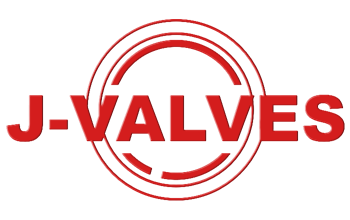
Fully Welded Ball Valves: The Reliable Choice for High-Pressure Oil And Gas Transportation

In the realm of industrial fluid control, valves play a crucial role in ensuring the safe and efficient transportation of various substances. Among the myriad of valve types available,
fully welded ball valves have emerged as a standout solution, particularly for high-pressure oil and gas transportation. These valves are designed to withstand extreme conditions while providing unparalleled reliability and durability.
Understanding Fully Welded Ball Valves
Definition and Basic Mechanism
A fully welded ball valve is a type of quarter-turn valve that operates by rotating a spherical element (the ball) within the valve body. The ball has a hole, or bore, that aligns with the pipeline when the valve is open, allowing fluid or gas to flow freely. When the ball is rotated 90 degrees, the bore becomes perpendicular to the pipeline, effectively blocking the flow. This straightforward yet highly effective mechanism ensures rapid and reliable operation, making fully welded ball valves ideal for applications where quick shutoff is critical.
The term "fully welded" refers to the valve's construction method. Unlike other types of ball valves that may use bolts or flanges to join different components, fully welded ball valves feature a seamless, single-piece body. This design eliminates potential leak paths and enhances structural integrity, making them exceptionally robust and reliable.
Key Components and Construction Features
The construction of a fully welded ball valve involves several key components, each contributing to its overall performance and reliability:
• Body Construction: The valve body is typically made from materials like carbon steel or stainless steel, chosen for their strength and durability. The use of automated TIG (Tungsten Inert Gas) or orbital welding techniques ensures a uniform, gap-free structure, eliminating weak points such as gaskets or bolts.
• Ball: The ball is precision-machined from materials like stainless steel or chromium-coated steel. Its bore is designed to align perfectly with the pipeline, allowing for smooth and efficient flow control.
• Seats: These are durable polymer or metal rings that create a tight seal around the ball when the valve is closed. Advanced materials like PTFE (Polytetrafluoroethylene) or graphite are often used to ensure zero leakage, even under high-pressure conditions.
• Stem: The stem connects the actuator to the ball, enabling smooth 90-degree rotation for open/close operations. It is designed to withstand the mechanical stresses associated with frequent operation.
• Sealing Mechanisms: Fully welded ball valves incorporate advanced seals that prevent fugitive emissions and withstand high pressures and temperatures. These seals are crucial for maintaining the valve's integrity in demanding environments.
Fully welded ball valves are widely used in onshore oil and gas pipelines, which are responsible for transporting crude oil, natural gas, and refined products from production sites to refineries, processing plants, and distribution centers. These pipelines often operate at high pressures to ensure efficient transportation over long distances. Fully welded ball valves are installed at various points along the pipeline, such as pipeline junctions, pumping stations, and storage facilities, to control the flow of the fluid. Their high-pressure resistance, low-pressure drop, and long service life make them well-suited for the demanding conditions of onshore oil and gas transportation.
Offshore oil and gas pipelines face even more challenging conditions, including harsh marine environments, high pressures, and corrosive seawater. Fully welded ball valves are the preferred choice for offshore applications due to their excellent resistance to corrosion and leakage. The one-piece welded body provides a reliable barrier against seawater intrusion, while the high-strength materials and robust design ensure the valve can withstand the extreme pressures and dynamic loads associated with offshore operations. Offshore platforms, subsea pipelines, and risers all rely on fully welded ball valves to control the flow of oil and gas, ensuring safe and efficient production and transportation.













